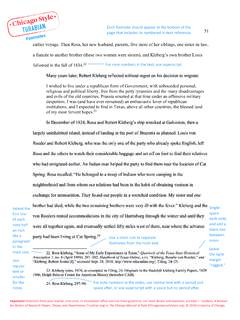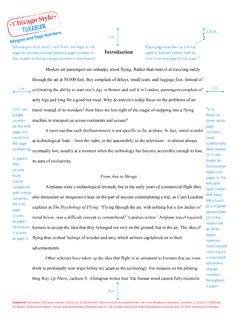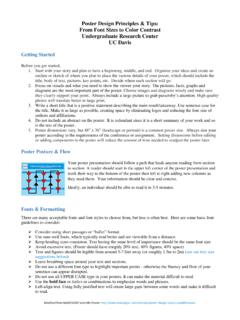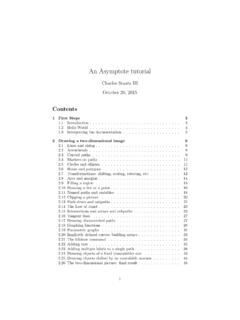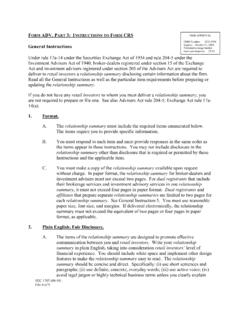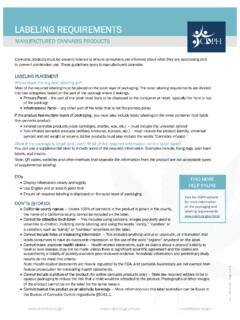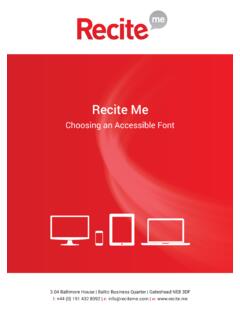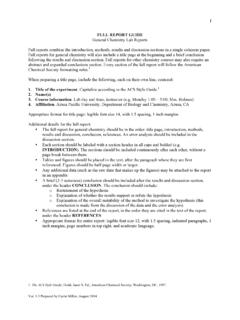Transcription of oduction or Conclusion Introduction
1 1 Leave two blank lines between the title and the first paragraph. Place the title Introduction (or Conclusion ) at the top of the first page, centered. Make this title and all other page titles bold. The font size for page titles may be two or three points larger than the main text. Introduction Modern air passengers are unhappy about flying. Rather than marvel at traveling safely through the air at 30,000 feet, they complain of delays, small seats, and baggage fees. Instead of celebrating the ability to start one s day in Boston and end it in London, passengers complain of achy legs and long for a good hot meal. Why do travelers today focus on the problems of air travel instead of its wonders?
2 How have we lost sight of the magic of stepping into a flying machine to transport us across continents and oceans? It turns out that such disillusionment is not specific to the airplane. In fact, initial wonder at technological feats from the radio, to the automobile, to the television is almost always eventually lost, usually at a moment when the technology has become accessible enough to lose its aura of exclusivity. Airplanes were a technological triumph, but in the early years of commercial flight they also demanded an imaginative leap on the part of anyone contemplating a trip, as Clara Lanahan explains in The Psychology of Flying. Flying through the air, with nothing but a few inches of metal below, was a difficult concept to comprehend, Lanahan Airplane travel required humans to accept the idea that they belonged not only on the ground, but in the air.
3 The idea of flying thus evoked feelings of wonder and awe, which airlines capitalized on in their advertisements. Other scholars have taken up the idea that flight is so unnatural to humans that we must think in profoundly new ways before we adapt to the technology. For instance on his piloting blog Way Up There, Jackson T. Afertapian writes that the human mind cannot fully reconcile 1. Clara Lanahan, The Psychology of Flying (Milwaukee: Mother of Dragons Press, 1995), 12. Format the text like the main text. Chicago-Style Paper Formats Introduction or Conclusion Important! Directions from your teacher, instructor, or dissertation office overrule these guidelines.
4 For more details and examples, see Kate L. Turabian, A Manual for Writers of Research Papers, Theses, and Dissertations ( ) or The Chicago Manual of Style ( ). 2018 University of Chicago. Introduction or Conclusio
